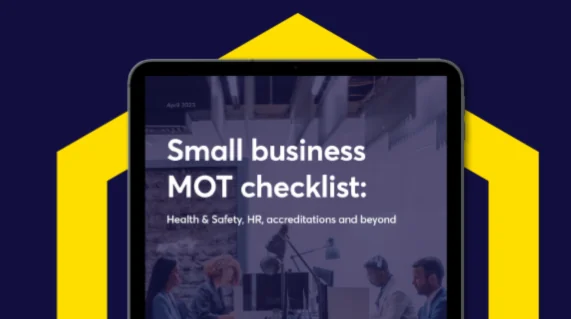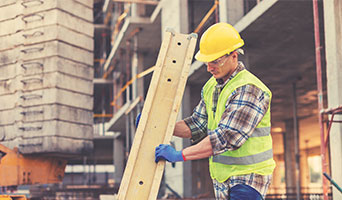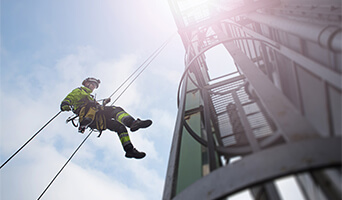Asbestos used to be a widely used building material, but was banned in 1999 after it was identified as a significant health hazard -in fact, it causes around 70% of occupational cancer cases in the construction industry. But many buildings constructed before the ban are likely to contain asbestos – so to protect individuals from exposure to it, it’s become a requirement to conduct an asbestos survey. And we’re here to guide you through the different types of asbestos surveys available so you can find the right one for your needs.
What is an asbestos survey?
An asbestos survey is a comprehensive inspection that’s carried out in order to identify the presence and condition of asbestos-containing materials (ACMs) in a building. The legislation that sets the rules for asbestos and asbestos surveys is the Control of Asbestos Regulations 2012.
During a survey, trained professionals assess the location, type, and extent of asbestos, providing a detailed report on their findings. This information is crucial for managing and mitigating asbestos-related risks. The survey also provides information on:
- Where ACMs are located
- How much ACM there is
- The current condition of the ACMs
- If the ACM is damaged or deteriorated
- Whether action is required
It’s important to know exactly who’s responsible for arranging an asbestos survey. Generally, the duty falls on the person or organisation in control of the premises. So, if you’re a homeowner, landlord or business owner, it’s vital to everyone involved that you request and carry out an asbestos survey.
When is an asbestos survey needed?
Asbestos surveys are needed on many types of buildings, but it’s not necessarily the type of building that determines whether one is needed. To make it simple, you’ll need an asbestos survey if the building was built before 2000 on any non-domestic buildings, public areas of domestic buildings and construction work.
When carrying out any construction or maintenance work on these pre-2000 buildings, a survey must be completed before any work begins. This is because any type of work could disturb the asbestos – like hanging shelves and servicing boilers to replacing ceiling tiles or changing flooring – thus causing exposure.
Types of asbestos surveys
There are different types of asbestos surveys, each designed with specific purposes in mind. Let’s take a look at the three main types:
Management survey
A management survey is the standard asbestos survey required to identify and manage ACMs within a building. It involves a thorough inspection of accessible areas and materials, providing a detailed report outlining the location and condition of asbestos. This survey is crucial for developing an effective asbestos management plan.
Refurbishment/demolition survey
This survey is more intrusive and aims to identify any asbestos that might be disturbed during renovation or demolition activities. You’ll need a refurbishment/demolition survey when planning significant changes to a building – essentially before carrying out construction work. This has to be carried out on pre-2000 buildings unless you know for certain there is no asbestos present.
Re-inspection survey
After identifying and managing asbestos, it’s essential to conduct periodic re-inspection surveys. This survey assesses the condition of previously identified ACMs, as they can change over time. This survey also makes sure that any recommended control measures are still effective, or checks if your management plan needs changes.
What happens during the survey?
The specific things that happen during an asbestos survey will mostly depend on which type of survey you get, but certain steps are consistently included across each type of survey.
The survey will usually begin with a walk-through of the site, so they can find anything that might be an obstruction to their work. They’ll also carry out a general risk assessment of the property and make sure the surveying processes they’re going to use are the right ones for the site. They’ll then work their way around the site and identify materials that they suspect contain asbestos.
The general rule of asbestos survey is to presume that materials contain asbestos – unless there’s strong evidence they don’t. The only way to be certain of potential ACMs is to take a sample of the material and send it off for analysis at the lab, which is what your surveyor will probably do.
After the survey you have chosen is complete, you’ll get an asbestos report detailing all the findings. This usually contains:
- A summary of the survey (methodology and main findings)
- Details of all asbestos materials present on your site
- Photographs
- Recommendations on how to manage asbestos safely
- No access areas
Reduce the risk of asbestos with HS Direct
Asbestos can pose a bit of a nightmare for business owners, landlords or homeowners. But with us by your side, it doesn’t have to be. We’re here to help, whether it’s an in-depth look at asbestos that you need, an asbestos risk assessment or asbestos awareness e-learning for your team. We also have a free asbestos checklist that can support you with asbestos management.
Or, if you’ve got more questions on asbestos and how you can go about handling it, or any kind of risk assessments, just call our friendly team on 0114 244 4461 or fill out our contact page and we’ll be in touch to help you out.









